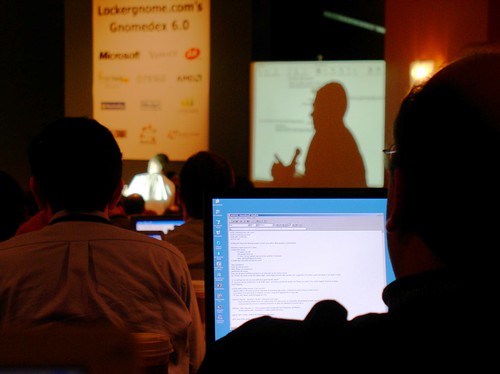 Click picture for Flickr view
Click picture for Flickr view.
Bottom-up learning occurs because employees want to be able to perform effectively in their jobs. The exact motivation may vary, from achieving job security to earning more money, gaining recognition or obtaining personal fulfilment, but the route to all these is performing well on the job, and employees know as well as their employers that this depends - to some extent at least - on their acquiring the appropriate knowledge and skills.
Instructional designers need to consider web surfing habits. Whether it's right or wrong, people who are online have been developing habits that they bring to the elearning course. Design courses to accommodate these power browsing habits. If you don't, chances are you'll lose a connection with the learner which will make the course ineffectual.
Employees today are learning how to do their jobs very differently! e-Learning, on-line Video, Social Networks and other Informal methods are now options for learning, in addition to more traditional Classes and On-The-Job Training (OJT). A recent survey by The MASIE Center of 6,100 employees in companies around the world provides a profile of how employees currently learn at work and how their learning preferences are changing. Via
Workplace Learning Today.
A new paper,
Improving fluid intelligence with training on working memory, describes that while there is a long history of research into cognitive training showing that, although performance on trained tasks can increase dramatically, transfer of this learning to other tasks remains poor. Here, the authors present evidence for transfer from training on a demanding working memory task to measures of Fluid intelligence. Also, see:
Help Your Working-memory Capacity and
Tests Produce Learning.


No comments:
Post a Comment